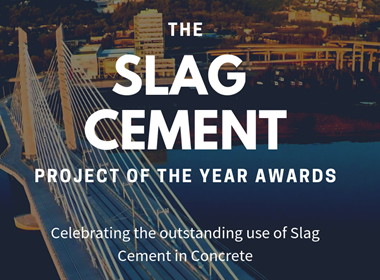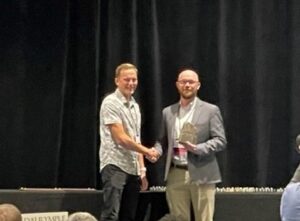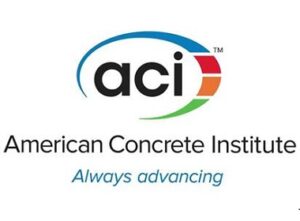 The Slag Cement Association (SCA) is proud to announce the recipients of its 2020 Slag Cement Project of the Year Awards. The SCA unveiled and celebrated these awards during the Slag Cement Project of the Year Awards virtual ceremony.
The Slag Cement Association (SCA) is proud to announce the recipients of its 2020 Slag Cement Project of the Year Awards. The SCA unveiled and celebrated these awards during the Slag Cement Project of the Year Awards virtual ceremony.
They chose sixteen construction projects from across the United States to showcase the broad applications of slag cement and its impact on creating more durable and sustainable concrete. Two research projects on slag cement use also received honors in this year’s program.
“The increase in award-winning projects this year demonstrate slag cement’s role in creating durable long-lasting structures. These outstanding examples showcase the value of using slag cement in concrete construction by achieving high-performing, durable, resilient, and sustainable results in concrete,” said SCA Board President, Ed Griffith.
2020 Slag Cement Project of the Year Awards Construction Award Winners include:
Akron Hazel Storage Basin (CSO Rack 10 & 11)
Slag Cement: Lehigh Hanson
Award: Durability
This project consisted of construction of a 4.5-million gallon wastewater storage basin, three remote diversion structures, and associated 30-inch sewers and other utilities, as well as an operations building to support the new facility. The design included more than 70,000 cubic yards of structural excavation and 10,000 cubic yards of cast-in-place concrete, 11 tipping buckets, two large screw pumps, and close coordination with the owner and operator of the active railroad tracks adjacent to the site. The project used slag cement in all five mixture designs for mass concrete, structural walls, and accessorial concrete to meet shrinkage, permeability, and mass concrete temperature control requirements. Mixture designs ranged from 3,000 to 8,000 psi with up to 35% cement replacement with slag cement.
Avon Park Air Force Range – Juliet Ramp & Airfield Pavements
Slag Cement: Argos
Award: High Performance
This project consisted of 18,000 cubic yards of new cement concrete pavement for the U.S. Air Force at the Avon Park Air Force Bombing Range. It featured the reconstruction of a runway, turnout, and Delta ramp, and also the new Juliet Ramp parking area. The cross-section was a concrete pavement section on a graded aggregate concrete base. The project used a 650 Flex concrete mixture. It consisted of a 72/28 blend of type I cement and slag cement.
The average flexural strength for this mixture was 670 psi in three days and 850 psi in 14 days. Achieving timely and reliable early strength was important on this project to drill dowels within a few days so that the adjacent lanes could be promptly placed. Because of its ultimate strength characteristics, they used slag cement on this project. In addition, slag cement contributed to the success of this project with its inherent benefits of easier placeability and improved workability when used in concrete construction.
The Blonde Apartments at 8th and Main
Slag Cement: Skyway Cement Company
Award: Green Design
The Blonde Apartments at 8th and Main is a 13-story building. Each floor is 10,000 square feet and the building includes 125 living units. This building features a rooftop terrace along with a gym, yoga room, and a common space on each floor. The building is the central business district of the city and features micro and studio apartments. The contractors used slag cement to create a high-strength concrete mixture that would consistently perform in the summer heat. Using slag cement, the high-strength mixture stayed workable longer than a mixture consisting of only portland cement, as well as helping to stay on schedule with the post-tensioned decks. The use of slag cement granted a strength curve that allowed the desired F^C to be reached to put stress on cables. It also allowed the strength to reach the 6,000 psi that the mixture was designed for in 28 days.
Chesapeake Beach Resort & Spa Parking Garage
Slag Cement: Lehigh Hanson
Award: Architectural
The Chesapeake Beach Resort and Spa is expanding its hotel, dining facilities, and meeting spaces to accommodate more guests. They constructed a new parking garage to allow an additional 700 vehicles to park on the resort’s premises. The four-story parking facility has both precast concrete beams and structures. The use of slag cement was for the cast-in-place application of this parking garage project. The concrete was produced at a National Ready Mixed Concrete Association (NRMCA) certified batch plant with 5S coarse aggregate.
The mixture was 25% maximum fly ash and 50% maximum slag cement. They used high-range water reducers in all pumped concrete and concrete with a 0.45 water-cementitious materials ratio (w/cm) or less. Using a mixture with 50% slag cement increased both the compressive and flexural strength of the concrete. Slag cement also helped reduce the permeability of the product and led to lower heat generation. In addition, slag cement helped improved the workability and pumpability of the concrete mixtures. They achieved a lighter color of the cured concrete by using slag cement. This created a more visual appeal and a “bright white” parking garage. The “bright white” appearance increased the concrete’s reflective properties, requiring less lighting and also creates brighter conditions at night.
Columbus Zoo and Aquarium – Adventure Cove
Slag Cement: St. Marys Cement
Award: Architectural
This project included three saltwater pools that hold 375,000 gallons of saltwater along with multiple buildings for housing animals and equipment spanning a four-acre area. The pools have acrylic glass for viewing underwater. They also have a tunnel that is 360-degrees acrylic for complete viewing of the animals swimming around the tunnel. The project maintained a natural environment that resembles the Pacific Northwest rocky coast while also being watertight and durable due to the saltwater.
The buildings house animals from all around the world and are designed to offer interactive experiences with guests. Slag cement was used for durability enhancement and potential sulfate and alkali silica reaction (ASR) mitigation. It required a polycarboxylate plasticizer for cement dispersion, strength enhancement, and desired placement slump. As a result of the polycarboxylate used and the low water-cementitious materials ratio (w/cm), concrete design strengths were achieved at seven days. The majority of the concrete furnished was a 5,000 psi design and approximately 1,700 cubic yards of ready mixed concrete was placed.
CSVT River Bridge
Slag Cement: Lehigh Hanson
Award: Durability
This project featured a bridge that is 4,500 feet long and 180 feet at peak elevation. The new bridge includes 15 spans with piers that range in height from approximately 60 to 180 feet. Its cross-section includes eight steel beams that are approximately 10 feet high. It has been constructed of approximately 62,000 cubic yards of concrete and approximately 20,000 tons of steel. The project will result in significant improvements when it comes to traffic and overall travel along this congested corridor. Slag cement was used in the mass concrete and all other concrete on the project to increase strength, reduce permeability, improve resistance to deicers, and inhibit reinforcing bar corrosion. In addition, slag cement enhanced the finish properties of the concrete and also durability and permeability were greatly improved.
Jamestown Municipal Airport Runway and Taxiway Paving Project
Slag Cement: LafargeHolcim
Award: High Performance
The Jamestown Municipal Airport rehabilitation project was an Federal Aviation Administration (FAA) grant funded $6.7 million project to reconstruct and upgrade components of the existing runway and taxiway. Local officials have extensively lobbied for the upgrades to the airport in an effort to attract businesses to the area and spur economic development. Concrete was chosen for the project to provide the city a durable, long-lasting pavement that will serve the community for years to come. Slag cement was included in the mixture to ensure the concrete provided met the specification guidance outlined in the FAA’s P-501. The pavement on the project met all required specifications, achieving a 28-day cylinder strength average of 7,620 psi. Though not a requirement on the project, the pavement has the added benefit of a bright white appearance which can help with visibility.
Kew Gardens Interchange
Slag Cement: Lehigh Hanson
Award: High Performance
Halmar International used slag cement for durability on this design build three highway (Grand Central Parkway, Jackie Robinson Parkway, and VanWyck Expressway) interchange. They used slag cement for mass concrete and increased the roadway durability. The interchange is a high volume roadway connecting John F. Kennedy International Airport (JFK), LaGuardia Airport (LGH), and Long Island.
Lake Tillery Bridge Rehabilitation Project
Slag Cement: LafargeHolcim
Award: Innovative Applications
The historic reinforced concrete open-spandrel four-arch Lake Tillery Bridge is located in the Piedmont area of North Carolina on highways NC 24/27/73 at the Stanly – Montgomery County Line just outside of Albemarle. This 1927 structure underwent a major renovation. They removed and replaced the 1,060-foot superstructure above four-arch bridge was completely, while keeping the architectural appearance of the original bridge and widening the width by 16 feet to accommodate increased safety for travelers. The engineering, demolition, and construction involvement surrounding the unloading and loading of the old arch structure was critical to the project’s success.
Slag cement was used in the deck placements of the bridge to increase durability and to mitigate against alkali silica reaction (ASR) in the concrete. In addition, slag cement helped with holding the slump longer and increased the workability of the mixture to help the finishers battle the southern heat during the placements. Due to the loading sequence of the concrete to protect the integrity of the arches, the increased pumpability of the mixture made the concrete easier to place from the long boom lines of the concrete pumps.
Lakeland Linder – Site Prep for Intermodal Center
Slag Cement: Argos
Award: Durability
Approximately 27,000 square yards of 15-inch PCC was placed for the Amazon Air Intermodal facility. Slag cement was used to enforce adequate strength and workability. In addition, slag cement helped with strength in both early breaks and 28-day breaks.
The Lumen at Playhouse Square
Slag Cement: LafargeHolcim
Award: Green Design
Standing 396 feet tall, The Lumen at Playhouse Square is a 34-story glass tower containing 319 residential apartments; built on a one-acre site in Cleveland, Ohio. The 602,000-square-foot project contains a parking garage that accommodates 528 cars and boasts of 22,000 square feet for resident amenities and retail. All of the concrete contained slag cement replacements between 20 and 40% for purposes ranging from increased strength and durability; to reducing permeability and thermal stresses. In addition, they employed slag cement to create an attractive surface where the concrete’s structural system is viewed as a striking interior element.
Slag cement was used to reduce thermal stresses in the 6,000 psi mat foundation. Testing revealed that a replacement of 40% proved to be ideal for both strength and reducing thermal stresses. The mixture contained a total cementitious content of 560 pounds and yielded 56-day compressive strengths in excess of 7,700 psi. During peak placement, the mat pour surpassed 700 cubic yards/hour. They achieved this volume of concrete in such a short time due to slag cement’s ability to improve the concrete’s rheology. Slag cement greatly improved the pumpabilty of the concrete, and helped eliminate stone pockets and honeycombing, and generally improved the overall placement characteristics of the mat foundation.
Nucor Steel of Florida
Slag Cement: Argos
Award: Innovative Applications
This project is located in the heart of Florida and most of the large concrete placements were during the summer with temperatures in the 90s. The goal was to reduce thermal stress of concrete associated with ambient conditions, improve resistance to aggressive chemicals, and higher long-term compressive strengths. They used a concrete mixture design with 50% ground granulated blast furnace slag cement to mitigate some of these concerns, but also to take advantage of other benefits of using slag cement in concrete such as better workability, easier finishability, lower permeability, and a more consistent mixture.
Slag cement helped exceed the specified compressive strength of 4,000 psi in 28 days in a 50% replacement mixture with 540 pounds of cementitious material and with a 0.49 maximum water-cementitious materials ratio (w/cm). They placed large lightweight concrete tanks and then moved them to specific locations and to set them underground. The purpose of the tanks was to cool the recycled water during the manufacturing process.
One Manhattan Square
Slag Cement: Sustainability
Award: Lehigh Hanson
This 72-story high-rise residential building is 847 feet is located at the foot of the Manhattan Bridge on the East River in New York, N.Y. They used slag cement for both sustainability and durability purposes on this project. In addition, slag cement helped with strength and sustainability. The pumpability of the mixture containing slag cement also helped speed construction along.
Pittsfield Charter Township Planning Commission Development
Slag Cement: St. Marys Cement
Award: Innovative Applications
The development includes 84 apartment units in three buildings. There are 94 rowhome units in 11 buildings and two mixed-use commercial buildings, a clubhouse, and a pool. The site has seven wetlands totaling 2.51 acres. They designed two underground storm water retention systems using precast concrete boxes to control discharge into regulated wetlands and also to accommodate 482 parking spaces.
The project created the system to capture water from impervious surfaces during heavy rains and to detain the storm water until it could be slowly released into the soils and wetlands. They used up to 35% slag cement in the concrete mixture design because of its workability, increased control of curing and hydration cycles, and long-term durability benefits. Using this combination allowed for an aesthetically pleasing product, consistent compressive strengths up to 65% higher than the project requirements, and durability benefits including a less permeable concrete, with higher resistance to sulfate attack, and inherent mitigation of alkali-silica reaction (ASR).
Potomac River Bridge/I-81 Widening and Replacement
Slag Cement: LafargeHolcim
Award: High Performance
This project consisted of the widening of four bridges on 1-81 over the Potomac River in Washington and Berkeley counties in West Virginia. The substructure included 14 9-foot diameter columns at 50 feet. The superstructure included two at 1,200 feet long by 60 feet wide and two at 150 feet long by 60 feet wide. They delivered a total of 27,892 cubic yards of concrete to this project. In addition, they used 2,332 tons of NewCem and 5,885 tons of portland cement on this project.
They used slag cement in mass concrete in the footings and piers at 35 to 70% replacement levels. In addition, they used slag cementin all other concrete in the structure. This includes the bridge abutments, decks, and parapets at 25% replacement. Slag cement helped lower the heat of hydration in mass concrete, achieve compliance with the thermal control plan, and also improve resistance to alkali silica reaction (ASR) in all concrete.
Upper Sandusky Water Reclamation Facility
Slag Cement: St. Marys Cement
Award: Durability
This project involves construction of a new 10 million gallon/day water reclamation facility for the City of Upper Sandusky Ohio. This facility features cast-in-place concrete structures including Sequencing Batch Reactor (SBR) tanks 1-4, Chemical Feed/Blower Building, Tertiary Filter Building, Cascade Aerator, Dump Pad, Administration Building, and also Headworks. In addition, they replaced the concrete floor in an existing garage. This allowed them to convert this structure to a new Screw Press Building.
The project also included approximately 15,000 square feet of 8-inch thick concrete pavement and various sidewalks and stoops. This project consisted of several mass concrete components. The foundations at the Headworks Structure were 4 feet thick. Furthermore, nearly all of the concrete structures built contain wastewater as part of the treatment process. Slag cement is an excellent means for mitigating the potential for sulfate attack by reducing permeability. Nearly all of the concrete furnished was a 4,500 psi design. They placed approximately 6,500 cubic yards of ready mixed concrete. There was not one 28-day break that failed to meet design strength.
2020 Slag Cement Research Award Winners include:
Sustainability of Concrete in the Pacific Northwest
Hilary Chaimov, Oregon State University
This research used continuously approved concrete mixture designs obtained from concrete suppliers in Seattle, Wash., and a life cycle assessment (LCA) tool to explore the impact that supplementary cementitious materials (SCMs) have on the global warming potential (GWP) of concrete in Seattle. The results are consistent with existing research in demonstrating that the use of SCMs in concrete mixtures reduce the GWP of concrete. A comparison of the GWP of the Seattle mixture designs with the GWP of the National Ready Mixed Concrete Association (NRMCA) benchmark mixtures demonstrated that 98% of continuously approved concrete mixtures in Seattle are meeting the NRMCA benchmarks for GWP.
This research provided a framework that other major cities can use to evaluate how sustainable their concrete is and also highlight the highest use of SCMs. In Seattle, 79% of the mixture designs used slag cement, and on average, these mixtures had a GWP 30% lower than the NRMCA benchmark for the same compressive strength. All continuously approved mixture designs in Seattle that used slag cement are below the NRMCA benchmarks, so if an engineer specifies a continuously approved concrete mixture design in Seattle with slag cement, they meet one stipulation for a LEED credit for their building.
Innovative Application of Slag in Improving Sustainability, Flexibility, and Cost in Thin Panels
Arash Rahmatian, University of Houston-Downtown
The thin panel applications are in walls, shell elements, domes, storage tanks, decorative structures, and even bridge decks. They are mainly under tension with a low thickness ratio per other dimensions. By default, due to the weakness of concrete is tension—they ignore its tensile strength in calculations. As long as the concrete section is deep enough you can regain the nominal flexural capacity by steel reinforcing bars. However, in thin panels with given limited depth of section, you need some concrete tensile block lever in spite of the low carrying stress. Consequently, the higher the compressive strength the higher the flexural resistance.
Flexural behavior is another pivotal factor in design for crack control and serviceability requirements. These were well-tested and also improved the capacity to a tangible extent. The thin elements of these mechanical properties need more improvement. In this proposal, they used slag cement for the purpose of both sustainability and cost efficiency. The above-mentioned mechanical properties enhanced with adding the components such as nanotubes, fibers, and various admixtures. The optimum compound included the ultimate flexibility, strength, and low cost proposed for industry application. They mounted a self-build direct tensile test apparatus on a tension machine. Then its results were verified by ACI formulas.
The 2020 Slag Cement Project of the Year Awards is the 10-year anniversary of running this program. The SCA has been running its annual awards program since 2010. Slagcement.org features both current and past award winners. Nomination forms for the 2021 Slag Cement Project of the Year Awards program will be soon available. You can also find this at slagcement.org. Nominations for the 2021 program will close November 1, 2021.
About the Slag Cement Association
The Slag Cement Association (SCA) is a nonprofit trade association. It represents both producers and shippers of slag cement in the United States. The SCA with assistance from its various volunteer based committees operate several annual activities and also programs in support of slag cement use in concrete mix design.














